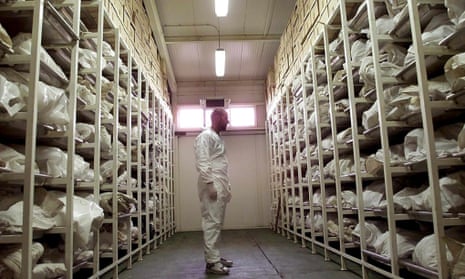A mobile phone app that enables eyewitnesses to download evidence of alleged atrocities from anywhere in the world so it can be verified and used to prosecute perpetrators is being launched on Monday.
The London-based International Bar Association (IBA) has developed digital technology that will help human rights activists document and store photographs and films that can be shown in court.
The initiative is initially aimed at bringing to justice those responsible for war crimes, torture or genocide in conflicts such as those raging in Syria, Ukraine or the Democratic Republic of Congo. It could eventually be extended to record abuses committed by paramilitary groups or security forces who use violence to disperse demonstrations.
In the age of citizen journalism, where billions of people have mobile phones, video footage is increasingly significant in court cases.
Most Metropolitan police officers, for example, are due to be equipped with body cameras by next year. Hunt monitors regularly rely on video evidence in bringing prosecutions; the inquest into the death of Ian Tomlinson in 2009 during G20 protests turned on revelations recorded on a mobile phone camera.
The initiative for the IBA’s storage and verification system, known as eyeWitness to Atrocities, stems from difficulties prosecutors experienced in relying on disputed footage of the alleged execution of captured Tamil Tiger fighters during the closing stages of Sri Lanka’s civil war. In the end, the images could not be presented in a trial because their precise timing, origin and therefore authenticity could not be proved.
The eyeWitness app is designed for Android smartphones but will be adapted for other devices. The scheme has been developed with the London legal data firm Lexis Nexis, which will store the information on its servers in the USA.
The app – which is free – adds a time-stamp and GPS-fixed location to recorded images which can then be encrypted and uploaded later to the system’s databanks from anywhere in the world.
Ian McDougall, general counsel of Lexis Nexis, said there is an option for the film to be deleted once sent – to protect witnesses whose phones might be seized later and examined by hostile forces. The software also has a “panic button” that allows the user to erase from view all recorded information as well as the app itself.
“There will be no trace to show that a particular video was there,” he explained to the Guardian. “There will be a team of lawyers from the IBA in London who will review the footage and decide if it should be submitted to an international war crimes tribunal.”
Lawyers developing the project have held talks about the procedure with the international criminal court (ICC), the international criminal tribunal for the former Yugoslavia (ICTY) and former prosecutors.
Asked what would happen if lawyers for a foreign country tried to use legal powers of discovery to gain access to the stored material, McDougall said: “It would be a matter for the courts but we would defend the right of confidentiality and insist that the film or photos should only be used for the purposes for which they were given.”
One of the problems of presenting videos as evidence in court has been ensuring they are proofed against counter-claims that they have been falsified or digitally altered. The eyeWitness project says that as well as creating “a trusted chain of custody record”, it also incorporates a counter that records the number of pixels in order to demonstrate that images have not been digitally manipulated.
The former South African judge and international war crimes prosecutor, Richard Goldstone, was on the board that oversaw the app’s creation. “I have little doubt that the pictures will be admitted in evidence because of the way it has been set up,” he told the Guardian. “Their provenance will be beyond question.
“Nowadays if there’s a demonstration in [Egypt’s] Tahrir Square of 10,000 people, about 6,000 of them will have smart phones. We will be able to review exactly what happened.
“I hope it will act as a deterrent: police and security officials will know that if they use disproportionate force or attack civilians it will affect their careers.”
He acknowledged that the project could generate vast amounts of evidence. Had it been available when he was the first chief prosecutor at the ICTY, responsible for sending investigators into Bosnia in the mid-1990s to gather evidence, he said, “this app would have been very useful”.
Photographs alone may not always be sufficient, he added, “but taken with the testimony of at least one outsider, they are likely to be crucial. I have no doubt that once it is widely known, it will become hugely important”.
The IBA, founded in 1947, brings together international practitioners, bar associations and law societies from around the world.
“The eyeWitness to Atrocities app will be a transformational tool in the fight for human rights, providing a solution to the evidentiary challenges surrounding mobile phone footage,” said Mark Ellis, IBA executive director.
“Until now, it has been extremely difficult to verify the authenticity of these images and to protect the safety of those brave enough to record them. As an advocate for the voiceless, the International Bar Association is dedicated to empowering activists on the ground who are witnessing these atrocities with the ability to bring criminals to justice.” DLA Piper, a London law firm, has also helped refine the admissibility requirements for evidence.
Wendy Betts, director of the EyeWitness app, said: “There’s a wealth of material to be mined from this [social media and crowd-sourced] footage if it can be authenticated.”
